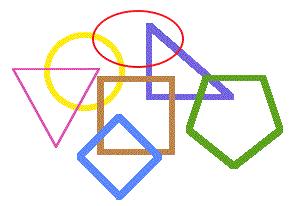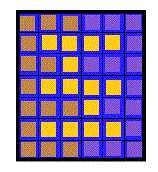Area and Perimeter
 Introduction
Introduction
In early geometry students see mostly squares, circles, some triangles and some regular polygons such as pentagons and hexagons. They often form the incorrect belief that bigger area is always associated with a longer perimeter. This belief can even survive contrary evidence, because the evidence can be forgotten and the belief reinstated. The activity below shows the independence of perimeter and area for simple irregular figures. Activity Students work individually or in small groups. Each one gets several 6cm x 7cm rectangles and an envelope. The rectangles (made from colored paper) should have a centimeter grid on them as shown in the figure below. Each small square is then 1 cm x 1 cm. 
1. Students measure the area and the perimeter of the rectangles. The result is then clearly written on the blackboard: Perimeter = 6cm + 7cm + 6cm + 7cm = 26cm 2. Divide and cut the rectangles into three connected parts of equal areas (same number of boxes). The division must follow the grid and squares must be connected by sides. Do it in a different way each time and record the perimeter of each part. 3. Keep the pieces in your envelope. The areas of the parts remains the same. What is the range of their perimeters?
|


